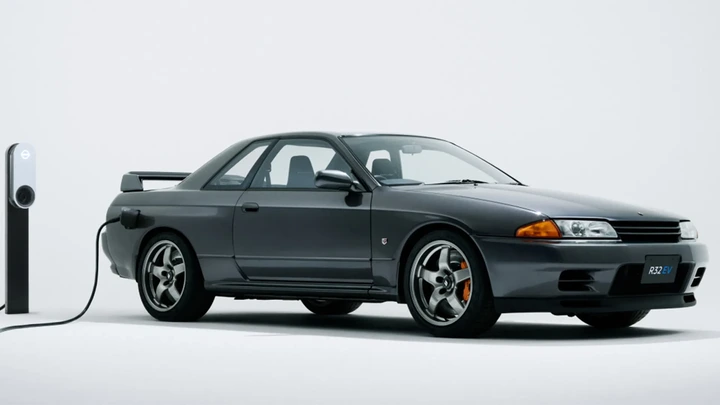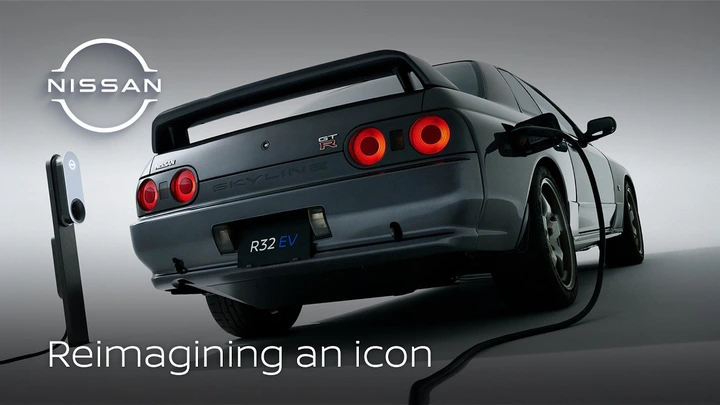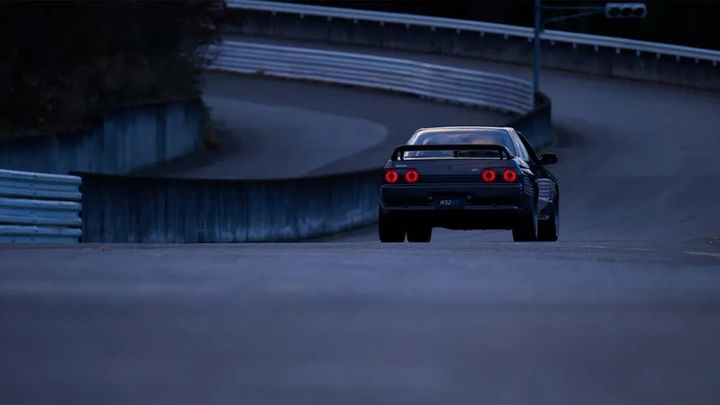Electric vehicles could be the key to safeguarding the legacy of automotive icons.

View pictures in App save up to 80% data.
- Electric motors and a 62kWh battery from a Leaf Nismo power the 90s icon
- Project lead wants future generations to experience the unique drive
- Electric performance matches the 280hp of the original
In a decision that is sure to ignite a passionate response from purists, a veteran engineer specializing in Nissan's electric vehicle powertrains has taken it upon himself to convert one of the brand's most legendary models—the R32 Skyline GT-R—into an electric vehicle.
That’s right, the performance machine that’s intrinsically linked to the best-selling Gran Turismo series has had its 2.6-liter, twin-turbocharged heart removed and replaced with a pair of 160kW electric motors that now power each axle.
However, rather than simply stirring up discussions on various online platforms, EV powertrain engineer Ryozo Hiraku emphasizes the significance of “recreating the allure of the R32 GT-R so that future generations can enjoy it.”
In summary, Hiraku is essentially acknowledging that contemporary electric vehicles don't possess that unique quality that makes classics like the Skyline a pleasure to drive, regardless of the era you were born into.
Furthermore, as the majority of traditional car manufacturers, such as Nissan, pledge to transition towards an entirely electric future, it may soon become unfeasible for employees to undertake initiatives focused on preserving the iconic combustion engine models of yesteryear. The necessary resources for such endeavors are likely to be unavailable.
The R32 GT-R project was a significant endeavor, as the team took the time to completely disassemble the 90s sports car and produce 3D models for its various components. As Hiraku highlights, computer-aided design (CAD) was not widely utilized during the early 90s.

View pictures in App save up to 80% data.
Additionally, the team meticulously recreated the engine sound of the original car and transmitted it into the cabin, enhancing the overall driving experience with a more immersive auditory element.
Plus, there’s a Hyundai Ioniq 5 N-esque 'shift shock' that has been programmed into the paddle-mounted gear shift logic that replicates the mechanical jolting experienced when shifting up or down through a proper mechanical gearbox.
The rear seats were removed to accommodate the Leaf Nismo battery pack, and larger brakes and rotors sourced from a R35 GT-R were installed to enhance the stopping power of this 367kg heavier vehicle. Consequently, the custom rims have increased in size from 16 inches to 18 inches to fit all the components.
Apart from that, it serves as a true-to-life electric version that seeks to capture the essence of the original vehicle, making it suitable for everyday use in a world that is progressively moving towards electric mobility.
Currently, there are no intentions to market a conversion kit. However, project leader Ryozo Hiraku emphasizes the significance of "preserving" the heritage of vehicles such as the R32 GT-R for the generations to come, suggesting that this could be a viable approach.
Analysis: The trend of revitalizing classic works with an electrifying twist is gaining momentum.

View pictures in App save up to 80% data.
A growing number of companies are emerging that focus on enabling classic cars to remain operational by replacing their traditional internal combustion engines with contemporary electric powertrains.
Electrogenic in the UK, for example, already manufactures ‘plug and play’ kits for the Mazda MX-5, Series Land Rovers, Jaguar E-Types, air-cooled Porsche 911s and the iconic DeLorean DMC-12, which I’ve driven.
These kits are dispatched to a certified installer on a pallet, ensuring that the replacement process is smooth, swift, and fairly budget-friendly. Meanwhile, customers have the freedom to get creative with customized conversions, provided they have the financial means to support their ideas.
Owners of these classic vehicles have the option to keep their internal combustion engines if they wish to revert to the original setup. However, the main concept is that this approach significantly enhances the practicality of these legendary cars, making them more suitable for urban environments like London, where stringent emissions laws effectively prohibit any vehicle that emits CO2.
A comparable narrative unfolds in the United States, where firms such as Gateway Bronco are skillfully integrating high-performance electric motors and battery systems into vintage Ford Bronco 4x4s, resulting in impressive transformations. Another player in the resto-mod arena, Everrati, is gaining attention by converting a variety of vehicles, including the Mercedes-Benz SL and an 800hp Ford GT40, into electric marvels.
Revitalizing iconic automotive legends like this guarantees they remain on the road instead of being tucked away in a garage, museum, or private collection, where they miss out on their true purpose – captivating onlookers and prompting them to pause and admire a design that has faded into obscurity amidst today’s safety-oriented, uniform car styles.